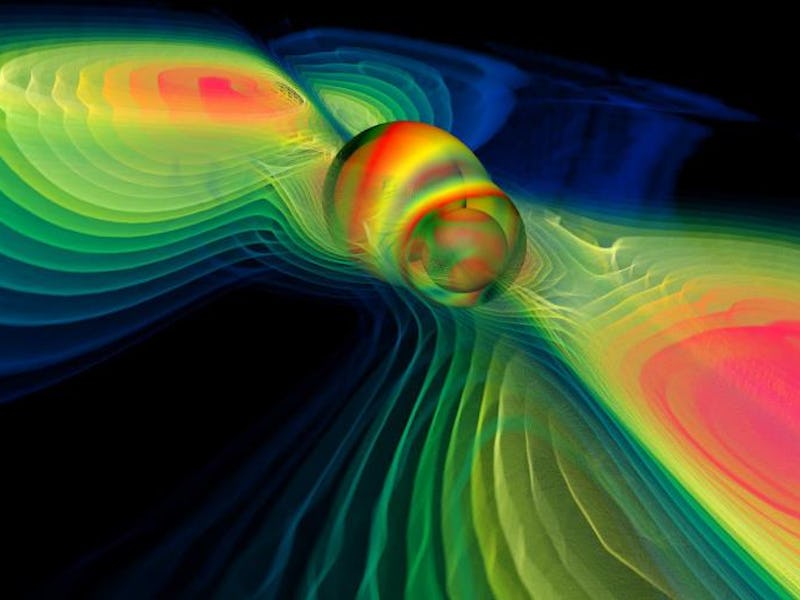Scientists Detect Gravitational Waves From a "Light" Black Hole Merger

Physicists at the Virgo Observatory and Advanced Laser Interferometer Gravitational-Wave Observatory (LIGO) have been seriously on a roll these last few months: In September, scientists announced the fourth-ever gravitational wave detection from a black hole merger. Then, in October, the collaboration announced the first-ever detection of gravitational waves from a neutron star collision. Now, physicists say that twin detectors from LIGO detected gravitational waves from another black hole merger between 0.7 to 1.5 billion light-years away.
The waves — which were detected on June 8, 2017 — came from an event called GW170608. According to LIGO, GW170608 was created by a smashup of two “relatively light black holes.” To be fair, those black holes were 7 and 12 solar masses and left a black hole 18 solar masses in their wake, so while they’re technically considered “light,” these bad boys were still pretty hefty. A paper on the discovery, penned by the LIGO and Virgo collaboration, has been submitted to The Astrophysical Journal Letters, but is available now via the ArXiv.
“This event, detected by the two NSF-supported LIGO detectors at 02:01:16 UTC on June 8, 2017 (or 10:01:16 pm on June 7 in US Eastern Daylight time), was actually the second binary black hole merger observed during LIGO’s second observation run since being upgraded in a program called Advanced LIGO,” LIGO said in a press release. “But its announcement was delayed due to the time required to understand two other discoveries: a LIGO-Virgo three-detector observation of gravitational waves from another binary black hole merger (GW170814) on August 14, and the first-ever detection of a binary neutron star merger (GW170817) in light and gravitational waves on August 17.”
From LIGO/VIRGO
LIGO and VIRGO scientists will continue to analyze GW170608 and other data from the detectors’ most recent run, searching for other events they might have missed. According to LIGO, the collaboration plans to start a new observing run next fall, but may run some tests before then.
It’s almost hard to believe that two years ago, no one had observed gravitational waves from a black hole merger. Einstein would be proud.